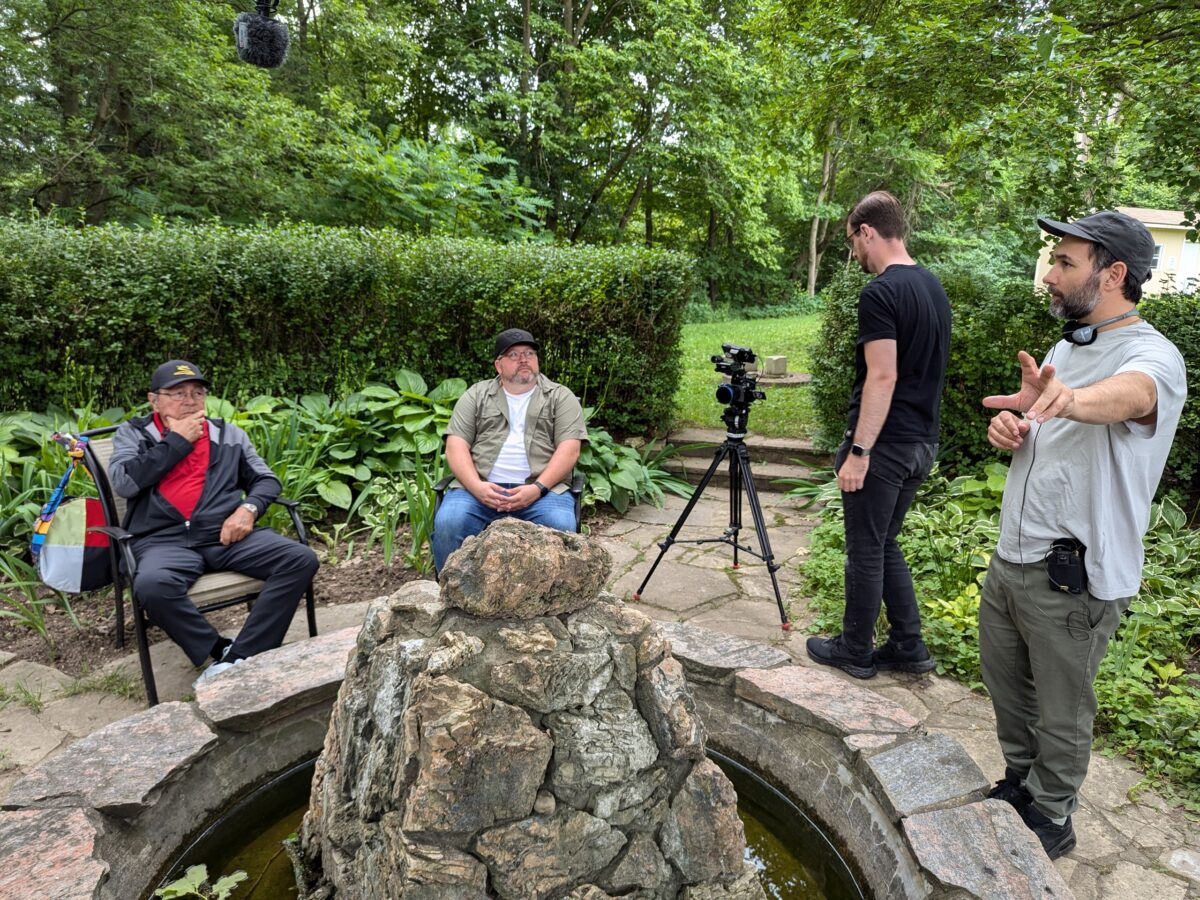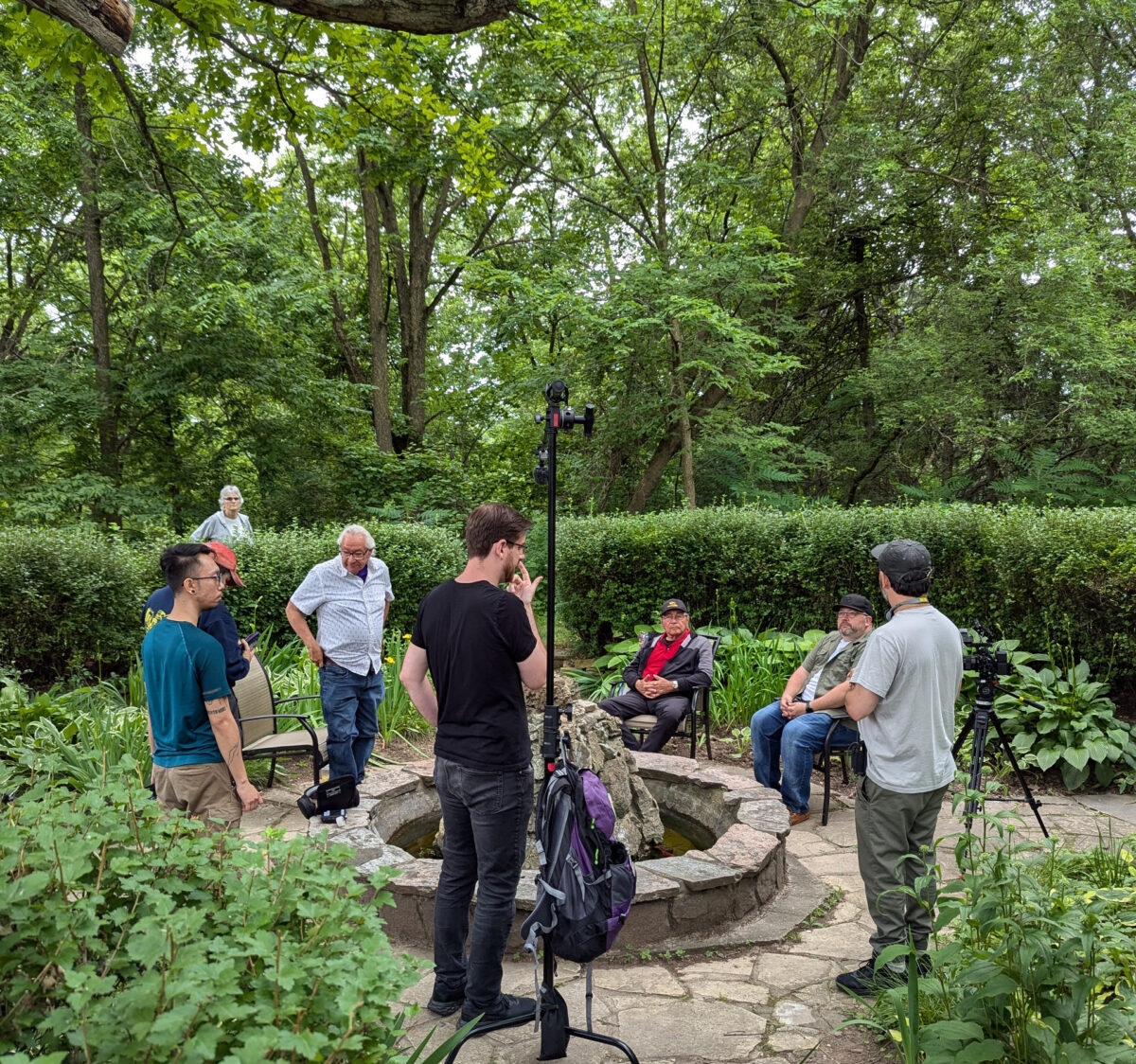Amy Wright’s program of research actively engages with Indigenous communities to promote culturally safe and holistic care for Indigenous Peoples. Her research is a means of improving not only their health outcomes, but also equitable access to care services.
As part of a Social Sciences and Humanities Research Council (SSHRC) funded study, Wright who is an assistant professor at the Lawrence Bloomberg Faculty of Nursing, is working with the Indigenous Diabetes Health Circle (IDHC), an Ontario-based organization that is focused on providing diabetes education and prevention programming, and volunteers from the Indigenous community, to create a digital health promotion campaign using a video series specifically for Indigenous men and youth, that provides culturally relevant ways to engage in healthy living.
The goal Wright says is to make health resources for men visible and focus on solving health challenges in their communities by embracing a strength’s-based approach.
“Rather than measuring deficits, we are actively creating resources by Indigenous Peoples for Indigenous Peoples, that seeks to reflect and respond to the needs of the community and to provide them with the care resources they need,” says Wright.
Featuring perspectives from Indigenous Elders and fathers, the video campaign will share how many of these men have worked to establish a healthy lifestyle that includes healing from trauma related to colonization, generational trauma, and learning to build a better relationship with the land.

“What we have heard time and again in our preliminary interviews, is that in our programming and training there is a lack of male faces among our participants, but that is not representative of their involvement in their own health or in their families,” says Jessica Pace, Knowledge Program Manager at the Indigenous Diabetes Health Circle and partner on this research project.
“We also know balance and support in family circles benefits everyone, and we wanted to highlight the stories we were hearing of men who are taking a very active role as partners and as fathers, and make sure that was reaching men who might not be seeing that.”
According to statistics from Diabetes Canada, in 2022, the prevalence of both type 1 and type 2 diabetes was at 17.2 per cent among First Nations living on reserve, and 12.7 per cent among those living off-reserve. Literature attributed to Janice Longboat, an Elder of the Turtle clan of the Mohawk Nation, describes the impact of forced relocations that moved many Indigenous Peoples away from traditional land-based foods, and made them reliant on ration boxes containing flour, salt, sugar and lard.
Pace adds that Indigenous Peoples are diagnosed with diabetes at a younger age and often have more severe symptoms when first diagnosed, making prevention and management of the disease a priority for Indigenous communities and health organizations like the IDHC. One of the main barriers to care for Indigenous people is a lack of culturally appropriate care.

In addition to visibility, Wright and Pace are focused on ensuring the video series offers a holistic approach, placing considerable emphasis on spiritual health, and the role of men in their families.
“There is a need for health resources that better reflect Indigenous Peoples holistic viewpoint, cultures, and traditions.” says Wright.
This holistic approach Pace adds resonates with Indigenous Peoples, because it allows the incorporation of Indigenous worldviews and wisdom, and demonstrates the connection between the mind, body and spirit.
“The holistic approach in Indigenous health practice sees the person as part of a community and culture, and a part of their environment. It empowers people to find health and healing outside of the health care system where they may face racism and barriers to access, which is part of the goal of this series,” says Pace.
Brady Lacroix, is one of the project participants, and describes himself as a dedicated supporter of health and wellness throughout Indigenous communities and across Turtle Island. He is a certified holistic recreation coach working in Indigenous communities where he speaks to men and youth about living a balanced and active lifestyle.
He draws inspiration he says from witnessing his father’s journey with melanoma and prostate cancer and the courageous way he saw his father handle those diagnoses including his ability to adjust his lifestyle.
“Conversations around men’s health are not always happening. It took me seeing my own father’s journey, to realize that we need to be talking to men about their health, their preservation, living a long life, and these are some of the conversations I have been seeking to have as a coach,” says Lacroix.
He chose to participate in this project he says, because he feels strongly that any opportunity to pass knowledge on to the next generation, especially as a father, is a truly rewarding experience. Some of what he hopes to convey through this video project series is the benefits of land-based activities.
“Reaching out to the land is incredibly healing and it requires activity, which can be as simple as walking, Nordic pole hiking, or being in the water. It is a good opportunity to find balance,” says Lacroix.

Filming of the video series Wright says, was intentionally done on the land to create a sense of engagement and connection for participants about what they feel wellness looks like to them. In addition to the video series, Wright’s research project will also look to create a training module for front line community health workers.
“From a nursing perspective, it is important to teach community health workers what culturally safe care looks like in order to provide the most equitable care to the communities that we serve,” says Wright. “This video series and the additional resources that will come from it, will provide additional tools for community health workers to draw upon that also reflect the community, and will help them build trust and relationships with the Indigenous clients they serve.”